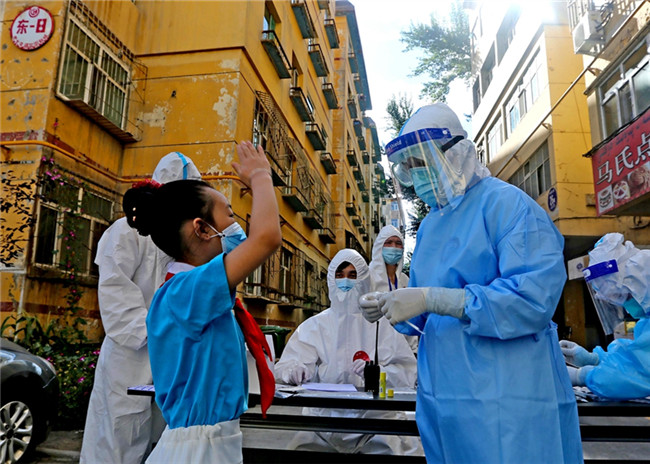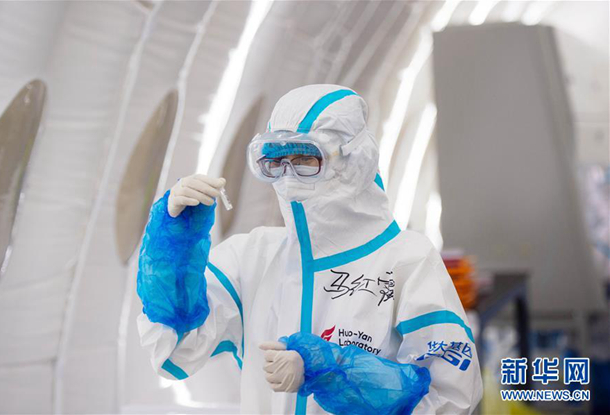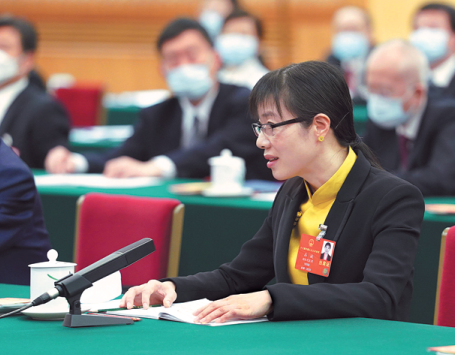
Is Novel Coronavirus a Kind of Flu?
The COVID-19 and influenza are both respiratory infectious diseases, with similar symptoms including fever and cough, but they are not the same. The differences lie in several aspects — causes, mortality rates, transmission and treatment.
Causes and Symptoms
Both the COVID-19 and flu are diseases caused by a virus. In the case of flu, the pathogens are influenza viruses, and for COVID-19, it is a novel coronavirus, known as severe acute respiratory syndrome coronavirus 2 (SARS-CoV-2).
Common symptoms for influenza and novel coronavirus are nearly identical — fever, cough and fatigue, sometimes sore throat and diarrhea. In severe cases, they result in pneumonia, and even death in the worst cases.
Flu has seasonal ups and downs. Although it can exist all year round, the virus infects more people in winter and spring.
As for the novel coronavirus, there is not yet enough evidence showing how it would respond to changing weather.
Mortality Rate and Susceptible Populations
The mortality rate for the novel coronavirus is around 3.7 percent globally as of March 13, higher than that for influenza, which has a mortality of usually below 0.1 percent.
Generally, people with poor immunity, especially children and seniors, are more likely to catch seasonal flu and develop into severe cases.
As for the novel coronavirus, the median age for the infected is 51, according to a report from the WHO-China Joint Mission on COVID-19. Individuals at the highest risk for severe disease include seniors and those with underlying conditions such as hypertension and diabetes.
Disease in children is relatively rare, and most cases among children are relatively mild.
But the novel coronavirus is a brand new virus, and no one has total immunity no matter their age.
Transmission
Both the flu and the novel coronavirus are transmitted in similar ways, by direct contact with infected patients or small droplets from the nose or mouth when a person with virus coughs or exhales.
Flu can be spread by an infected person for several days before their symptoms appear. As for the novel coronavirus, spread might be possible before people show symptoms, but this is not thought to be the main way the virus spreads.
For the novel coronavirus, there is also a risk for aerosol transmission.
In health facilities, people may catch the virus if they breathed in aerosol, the suspension of fine solid or liquid particles in the air, that have been contaminated by the virus. But the risk of aerosol transmission in outdoor spaces is very low.
The novel coronavirus has also be found in patients' fecal samples, but fecal-oral transmission does not appear to be a major transmission route.
Vaccines and Treatments
Vaccines are available to prevent or reduce the severity of some types of flu, while there are not yet any vaccines for the novel coronavirus.
In regard to treatment, there are not yet specific treatments for COVID-19.
Antiviral treatments used on a trial basis include interferon-α, lopinavir/ritonavir, an anti-HIV drug, and anti-malaria drug chloroquine phosphate.
Transfusing plasma from recovered patients is also used to treat severe cases. Traditional Chinese medicine has also been used widely to treat COVID-19 patients, and improved recovery rates.
(Source: chinadaily.com.cn)
 Women Medics in NW China's Xinjiang Contribute to COVID-19 Epidemic Containment
Women Medics in NW China's Xinjiang Contribute to COVID-19 Epidemic Containment Women CPC Members on Front Line of Anti-COVID-19 Battle in Beijing
Women CPC Members on Front Line of Anti-COVID-19 Battle in Beijing Deputy Recalls Role in COVID-19 Fight
Deputy Recalls Role in COVID-19 Fight- Woman Epidemiological Researchers Race Against the Clock on Front Line
 Pic Story of Nurse Who Aided COVID-19 Fight in Wuhan
Pic Story of Nurse Who Aided COVID-19 Fight in Wuhan Volunteer Provides Milk Tea, Back up Anti-Epidemic Workers in NE China
Volunteer Provides Milk Tea, Back up Anti-Epidemic Workers in NE China

 京公网安备 11010102004314号
京公网安备 11010102004314号